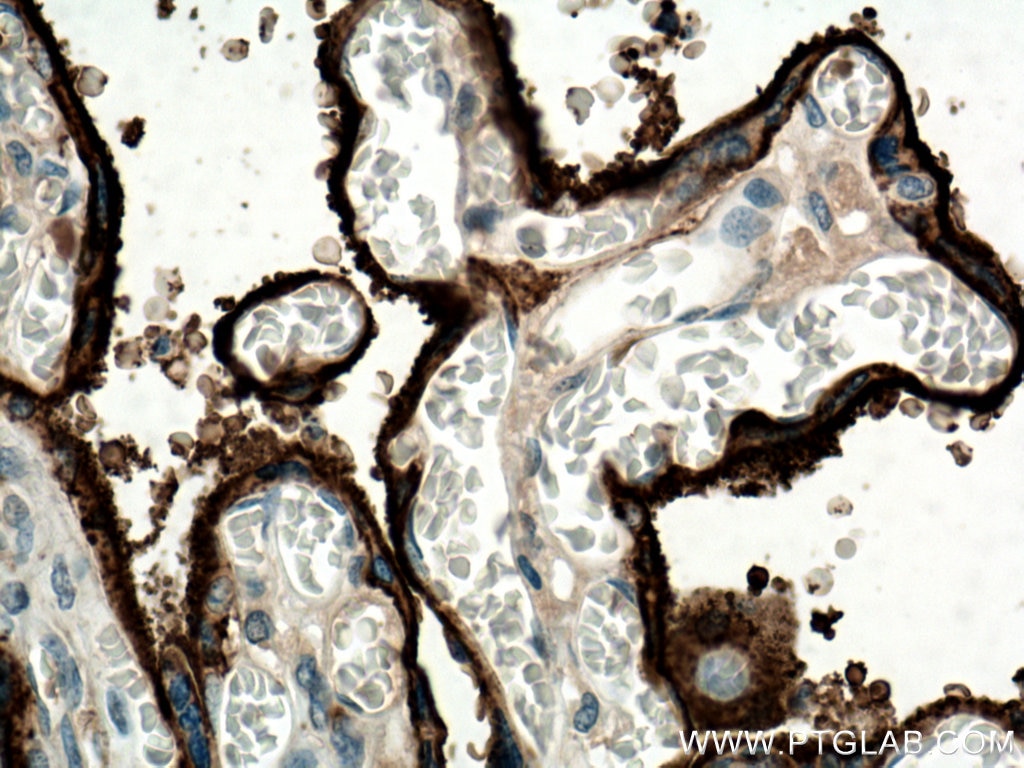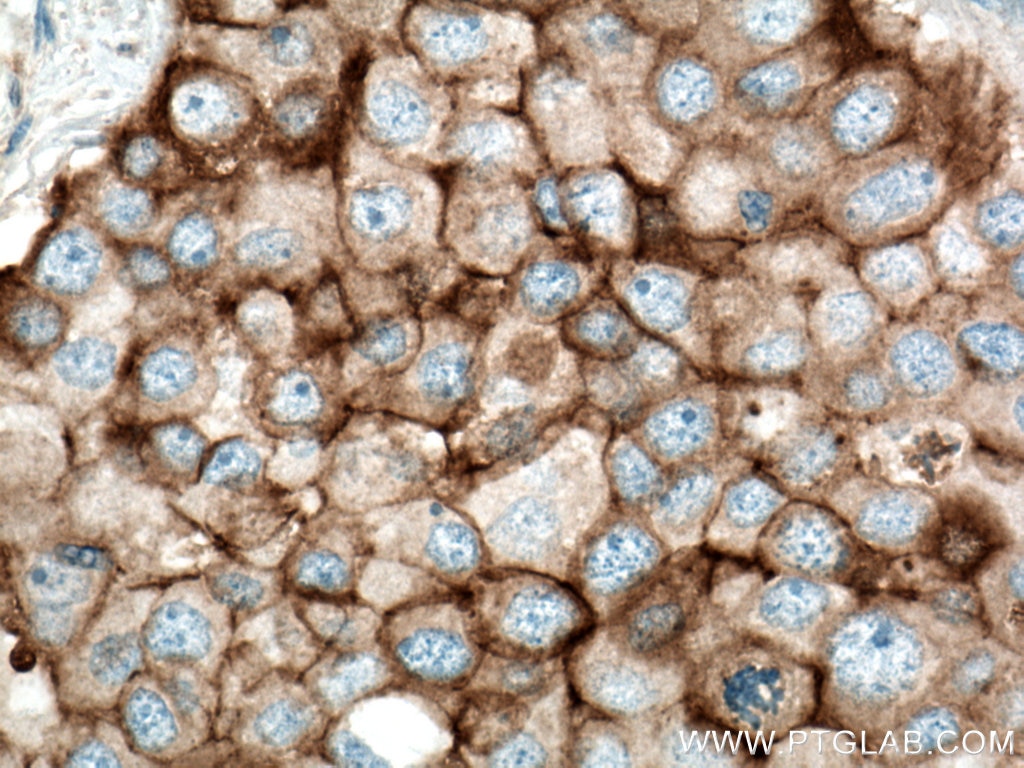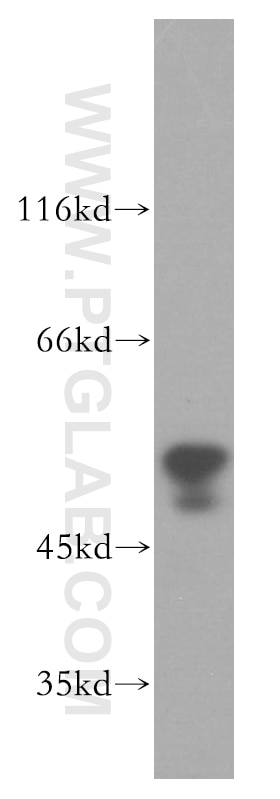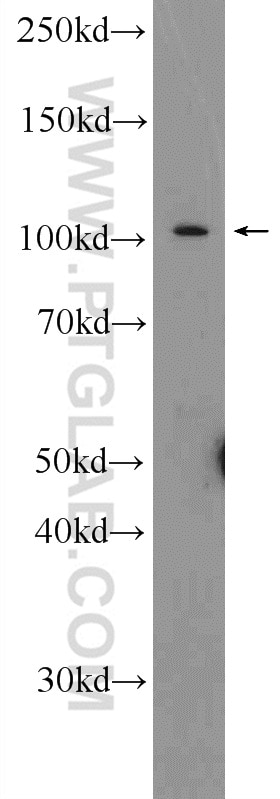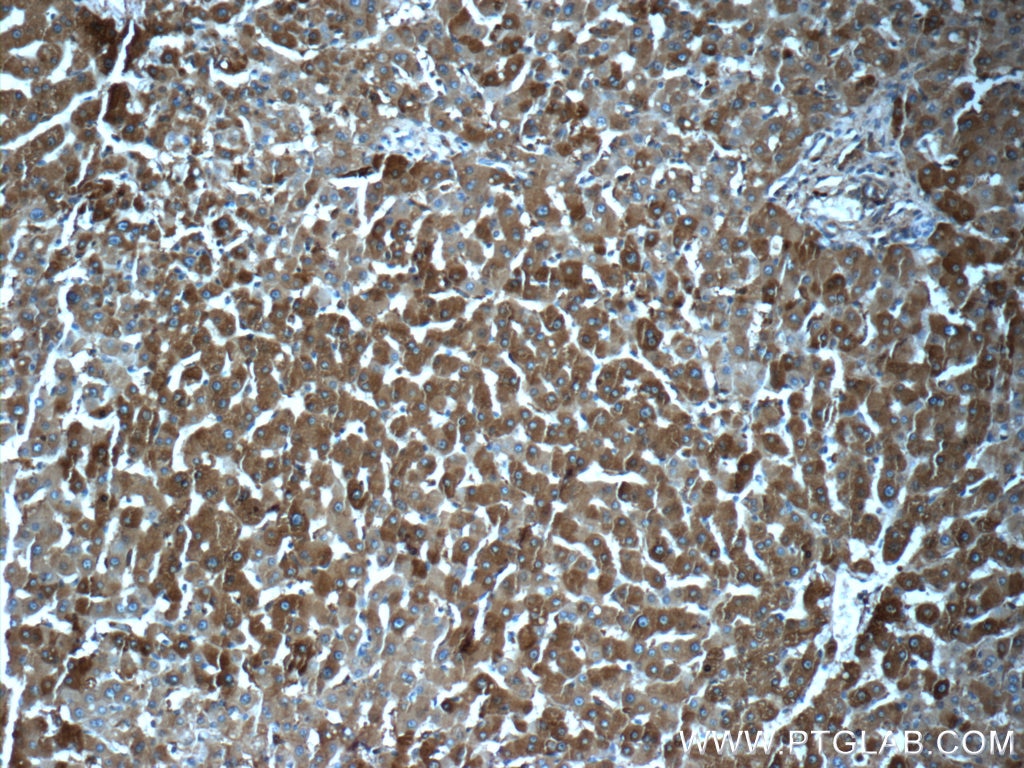- Phare
- Validé par KD/KO
Anticorps Monoclonal anti-CD71
CD71 Monoclonal Antibody for FC, IF, IHC, IP, WB, ELISA
Hôte / Isotype
Mouse / IgG2a
Réactivité testée
Humain
Applications
WB, IP, IHC, IF, FC, Blocking assay, ELISA
Conjugaison
Non conjugué
CloneNo.
3C11F11
N° de cat : 66180-1-Ig
Synonymes
Galerie de données de validation
Applications testées
| Résultats positifs en WB | cellules U-251, cellules A431, cellules A549, cellules HeLa, cellules HepG2, cellules K-562, cellules Raji, cellules TF-1, cellules U2OS |
| Résultats positifs en IP | cellules HeLa |
| Résultats positifs en IHC | tissu placentaire humain, tissu de cancer du sein humain il est suggéré de démasquer l'antigène avec un tampon de TE buffer pH 9.0; (*) À défaut, 'le démasquage de l'antigène peut être 'effectué avec un tampon citrate pH 6,0. |
| Résultats positifs en IF | tissu de cancer du sein humain, cellules MCF-7 |
| Résultats positifs en cytométrie | cellules Raji |
Dilution recommandée
| Application | Dilution |
|---|---|
| Western Blot (WB) | WB : 1:5000-1:50000 |
| Immunoprécipitation (IP) | IP : 0.5-4.0 ug for 1.0-3.0 mg of total protein lysate |
| Immunohistochimie (IHC) | IHC : 1:2000-1:8000 |
| Immunofluorescence (IF) | IF : 1:200-1:800 |
| Flow Cytometry (FC) | FC : 0.20 ug per 10^6 cells in a 100 µl suspension |
| It is recommended that this reagent should be titrated in each testing system to obtain optimal results. | |
| Sample-dependent, check data in validation data gallery | |
Applications publiées
| KD/KO | See 1 publications below |
| WB | See 13 publications below |
| IF | See 3 publications below |
Informations sur le produit
66180-1-Ig cible CD71 dans les applications de WB, IP, IHC, IF, FC, Blocking assay, ELISA et montre une réactivité avec des échantillons Humain
| Réactivité | Humain |
| Réactivité citée | Humain |
| Hôte / Isotype | Mouse / IgG2a |
| Clonalité | Monoclonal |
| Type | Anticorps |
| Immunogène | CD71 Protéine recombinante Ag21612 |
| Nom complet | transferrin receptor (p90, CD71) |
| Masse moléculaire calculée | 85 kDa |
| Poids moléculaire observé | 90 kDa |
| Numéro d’acquisition GenBank | BC001188 |
| Symbole du gène | TFRC |
| Identification du gène (NCBI) | 7037 |
| Conjugaison | Non conjugué |
| Forme | Liquide |
| Méthode de purification | Purification par protéine A |
| Tampon de stockage | PBS avec azoture de sodium à 0,02 % et glycérol à 50 % pH 7,3 |
| Conditions de stockage | Stocker à -20°C. Stable pendant un an après l'expédition. L'aliquotage n'est pas nécessaire pour le stockage à -20oC Les 20ul contiennent 0,1% de BSA. |
Informations générales
CD71, also known as transferrin receptor protein 1 (TfR1), is a transmembrane glycoprotein composed of two disulfide-linked monomers, each of 90 kDa molecular weight. Each monomer binds one holo-transferrin molecule creating an iron-Tf-TfR complex which enters the cell by endocytosis. CD71 is present on actively proliferating cells and is essential for iron transport into proliferating cells.
Protocole
| Product Specific Protocols | |
|---|---|
| WB protocol for CD71 antibody 66180-1-Ig | Download protocol |
| IHC protocol for CD71 antibody 66180-1-Ig | Download protocol |
| IF protocol for CD71 antibody 66180-1-Ig | Download protocol |
| IP protocol for CD71 antibody 66180-1-Ig | Download protocol |
| Standard Protocols | |
|---|---|
| Click here to view our Standard Protocols |
Publications
| Species | Application | Title |
|---|---|---|
Chem Eng J Functionalized biological metal–organic framework with nanosized coronal structure and hierarchical wrapping pattern for enhanced targeting therapy | ||
Cell Death Dis Super-enhancer-driven MLX mediates redox balance maintenance via SLC7A11 in osteosarcoma | ||
Free Radic Biol Med Targeting the Na+/K+ ATPase DR-region with DR-Ab improves doxorubicin-induced cardiotoxicity | ||
Bioeng Transl Med Multistage targeting and dual inhibiting strategies based on bioengineered tumor matrix microenvironment-mediated protein nanocages for enhancing cancer biotherapy. | ||
PLoS Genet SNX-3 mediates retromer-independent tubular endosomal recycling by opposing EEA-1-facilitated trafficking. | ||
J Biol Chem Rab11-mediated post-Golgi transport of the sialyltransferase ST3GAL4 suggests a new mechanism for regulating glycosylation. |






